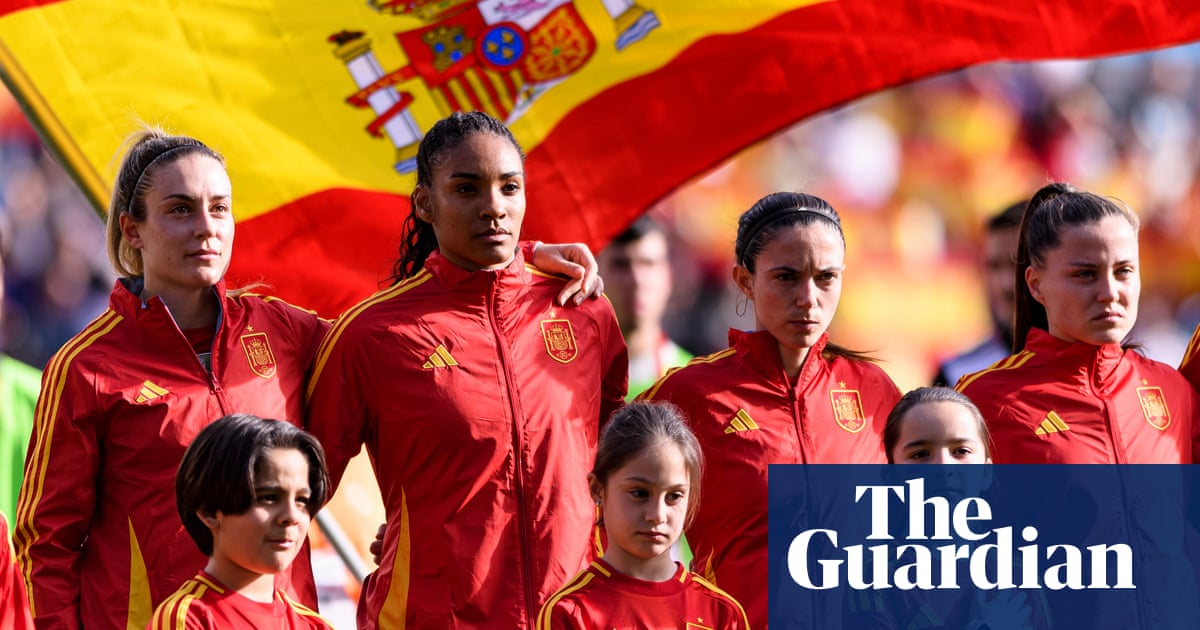This article is part of theGuardian’sEuro 2025 Experts’ Network, a cooperation between some of the best media organisations from the 16 countries who qualified. theguardian.com is running previews from two teams each day in the run-up to the tournament kicking off on 2 July.
Spain are in exceptional form, with a settled squad and only a few lingering doubts. With a stellar cast including Aitana Bonmatí, Alexia Putellas, Mariona Caldentey, Laia Aleixandri, Irene Paredes, Esther González, Ona Batlle and Patri Guijarro, they are the only team in Switzerland with two doubleBallon d’Or winners– an accoladeLa Rojahave dominated since 2021. Montse Tomé’s side sparkled in the recent 2-1 win against England, controlling the game with their trademark possession play and an increasingly incisive final ball.
Not everything is perfect, however. Spain will be without the injured Tere Abelleira and Laia Codina while two mainstays of past tournaments, Jenni Hermoso and Ivana Andrés, were not selected. The Real Madrid goalkeeper, Misa Rodríguez, also misses out as Tomé begins to usher in a generational shift.
Spain arrive as favourites – a far cry from the supporting role they played atEuro 2022. Ranked No 1 in Europe and No 2 in the world behind the US, they are thereigning world champions, and their rise in recent years has been meteoric. After winning the 2023 World Cup, they added the2024 Nations League, and have reached the final four of this year’s competition. This is their fifth appearance at a Women’s European Championship, and their fourth in a row. Expectations are high and anything less than a place in the final on 27 July would be considered a failure.
Montse Tomé took over in September 2023, during thefallout from the Luis Rubiales scandalafter Spain’s tournament triumph. Having been the No 2 to previous coach Jorge Vilda, she arrived at a difficult moment, but has calmed things down via success on the pitch. Under her leadership, Spain won the inaugural Women’s Nations League but fell short at the Olympics. Not afraid to make difficult decisions, such as leaving out Hermoso, she said after her final selection: “It’s hard to pick 23 players, but we do the job professionally and at the end of the day that is what we have chosen.”
Alexia Putellasleads Spain into the Euros as their undisputed reference point. The Barcelona midfielder was cruelly ruled out of Euro 2022 after tearing her ACL days before Spain’s opener in London. Now fully fit and fresh from an outstanding season at club level, she returns as the linchpin in Spain’s midfield. Her mix of experience and class makes her a central figure in Tomé’s plans.
Keep an eye onClàudia Pina. The 23-year-old Barcelona forward is Spain’s breakout star. Tomé left her out of the squad just six months ago, but now she appears undroppable. Her goals have been crucial in securingLa Roja’s place in theNations League semi-finals, and after missing out on the 2023 World Cup, she returns with something to prove – and the form to do just that. Her consistency in a talent-stacked Barça side has underlined her potential as a major figure in Spain’s next generation.
Sign up toMoving the Goalposts
No topic is too small or too big for us to cover as we deliver a twice-weekly roundup of the wonderful world of women’s football
after newsletter promotion
Liga F is a fully professional competition featuring 16 top-tier clubs. Media coverage is comprehensive and matches are widely accessible. The league still struggles with attendances, averaging around 1,000 per match; improving that is one of the league’s most pressing goals. Barcelona remain the dominant force, although Real Madrid and Atlético pushed them hard this season. The gulf between the top and bottom remains stark, with some clubs operating on minimal budgets. Liga F has an impressive mix of Spanish stars such as Putellas, Salma Paralluelo and Abelleira, as well as elite foreign imports such as Fridolina Rolfö, Linda Caicedo and Caroline Weir.
The final.
The Spain team guide was written by Amalia Fra foras.com.
